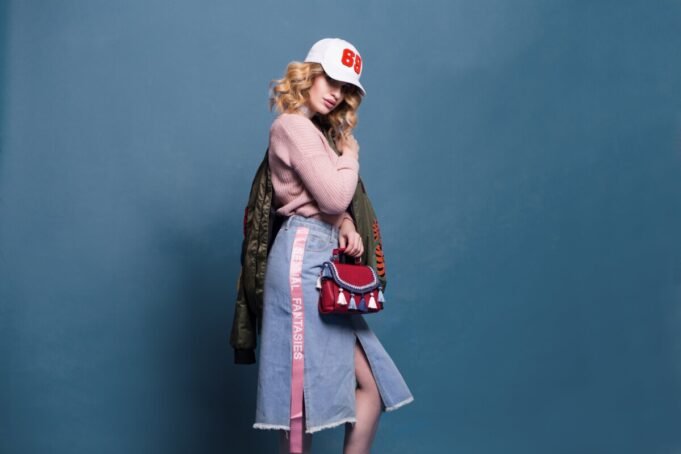Urban style has undergone a remarkable evolution, from its streetwear roots to its embrace by the high fashion world. Tracing its origins to various subcultures and social movements, urban fashion has steadily infiltrated the mainstream over the decades. While street style was once dismissed as a passing fad, it now exerts a profound influence on contemporary fashion. This article explores the key phases in the development of urban style and its journey from streets to high fashion.
The History of Streetwear
The roots of streetwear stretch back to the 1970s, emerging from the intersecting subcultures of hip hop, skateboarding, punk, and graffiti. In the urban neighborhoods of New York City, Los Angeles, and London, these countercultures fostered a distinctive style defined by oversized silhouettes, graphic prints, sportswear influences, and DIY customization. This eclectic aesthetic reflected the rebellious spirit of the youth.
Several pioneering streetwear labels arose during this era. In New York, Dapper Dan began selling custom high fashion pieces reinvented with logos from luxury brands like Gucci and Louis Vuitton. On the West Coast, brands like Vans and Stüssy embodied the laidback skate culture of southern California. In London, Vivienne Westwood and Malcolm McLaren’s Seditionaries boutique became a focal point for the city’s punk scene.
As hip hop exploded in popularity during the 1980s and 90s, urban streetwear coalesced around the oversized looks, bold prints, and sports apparel favored by rappers and DJs. Brands like Kangol, Adidas, and Nike flourished by tapping into hip hop style. The rise of legends like Run DMC and Grandmaster Flash cemented the connection between streetwear and hip hop culture.
Street Style’s Transition to High Fashion
In the 2000s, urban streetwear began crossing over into luxury fashion. Several factors drove this transition from streets to high fashion runways.
First, celebrity endorsements and high-profile collaborations brought streetwear brands into the mainstream. Pharrell Williams, Kanye West, and Jay Z leveraged their cultural cachet by partnering with brands like Adidas, Gap, and Louis Vuitton. Luxury houses took note of streetwear’s popularity among celebrities and influencers.
Second, respected designers like Stella McCartney and Alexander Wang began incorporating streetwear elements like oversized hoodies, graphic t-shirts, and sneakers into their collections. Their elevated take on casual urban style appealed to luxury consumers.
Finally, the rise of influential streetwear designers like Virgil Abloh enabled urban fashion to permeate the upper echelons of the industry. Abloh’s appointment as Louis Vuitton’s menswear designer in 2018 cemented streetwear’s newfound status in high fashion.
The Influence of Street Style on Fashion
From silhouettes to accessories to branding, current fashion continues to take cues from street style. Oversized hoodies, track pants, graphic tees, and sneakers now dominate both runway shows and retail stores.
Mainstream brands have wholeheartedly embraced urban fashion aesthetics. Mass market retailers like Zara, H&M, and Uniqlo frequently reference streetwear trends in their affordable collections. Luxury houses like Gucci, Balenciaga, and Valentino have incorporated oversized logos, bold prints, and street casting into their runway shows.
Today, the lines between high fashion and streetwear have become increasingly blurred. Collaboration collections between major brands and streetwear designers like Supreme and Off-White are now commonplace. Key elements of urban style like hoodies, sneakers, and t-shirts have been reinterpreted by nearly every fashion label.
The Evolution of Urban Fashion through the Decades
Urban fashion has undergone several style transformations since its emergence in the 1970s, reflecting the changing tastes of youth subcultures decade to decade.
1970s: Roots in Subcultures
The early urban style of the 1970s coalesced from hip hop, punk, skate, and graffiti subcultures in major cities. Looks featured oversized silhouettes, graphic prints, athletic wear, and DIY customization. Key brands included Vans, Stüssy, and Seditionaries.
1980s: Rise of Hip Hop Fashion
With hip hop’s growing mainstream popularity in the 80s, urban fashion became heavily associated with oversized athletic wear, tracksuits, leather bombers, and bold prints. Sportswear brands like Adidas and Nike flourished through hip hop style.
1990s: Streetwear Goes Mainstream
Urban streetwear edged into the mainstream in the 1990s, driven by celebrities like Tupac and brands like FUBU. Casual workwear with urban sensibilities gained popularity, along with tomboyish silhouettes for women.
2000s: Diffusion Collections Emerge
In the early 2000s, luxury labels like Gucci and Louis Vuitton launched more affordable diffusion collections with streetwear aesthetics. This marked a turning point for urban fashion’s transition into high fashion.
2010s: Athleisure and Genderless Looks
The 2010s saw the rise of athleisure, with urban wardrobes centered around sneakers, joggers, and hoodies. Unisex and gender fluid looks also took hold, reflecting streetwear’s typically genderless ethos.
2020s: Collaboration Culture
Today, urban fashion is defined by constant collaborations between major brands and buzzy streetwear designers. Oversized silhouettes and logos remain pervasive across both streetwear and high fashion.
Conclusion
Urban fashion has completed a remarkable evolution from its humble streetwear origins to being embraced by the most elite corners of the fashion industry. Street style now exerts an undeniable influence on everything from silhouettes to branding to runway casting. Oversized hoodies and sneakers have earned a definitive place in the fashion lexicon.
While remaining true to its subcultural roots, urban style continues to evolve and expand its reach. Young creatives are pushing streetwear in new avant-garde directions, while cross-brand collaborations generate constant excitement. As urban fashion spreads globally, we can expect even more cultural hybridization and innovation in the decades to come. The journey of street style is far from over, and its impact on the future of fashion remains to be seen.




































